‘All in same canoe’: What’s it like being young on a sinking small island?
Youth activist Litokne Kabua outlines the perils facing the low-lying Marshall Islands as the seas swell and tides rise.
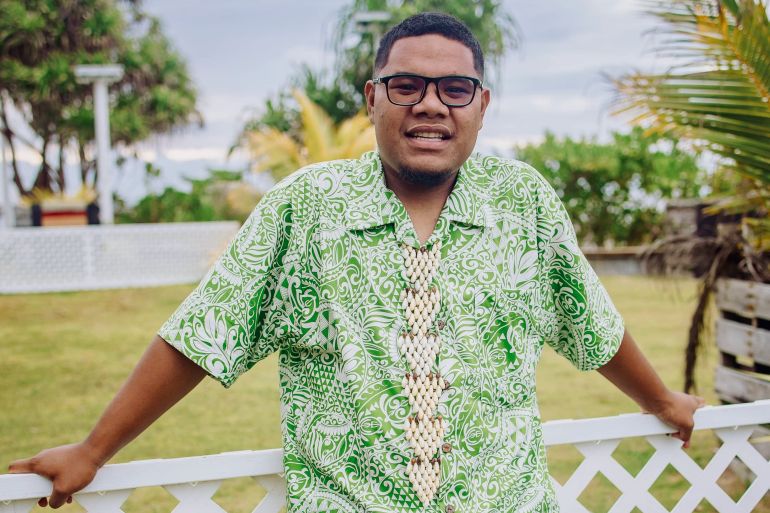
When it comes to climate change, the low-lying Marshall Islands in the middle of the Pacific Ocean are as front line as it gets.
The atoll state’s 60,000 inhabitants are witnessing the visible shrinking of their shores. Most of the 1,000 islands, spread out over 29 atolls, are only two metres above the swollen ocean.
Keep reading
list of 4 itemsUN chief says rising seas a ‘death sentence’ for some countries
COP26 urged to prioritise adaptation as climate emergency surges
Marshall Islands takes world nuclear powers to ICJ
Debate over rising sea levels is rife, but with ice sheets rapidly melting, many scientists believe rises in sea levels will smash current estimates of one metre by 2100.
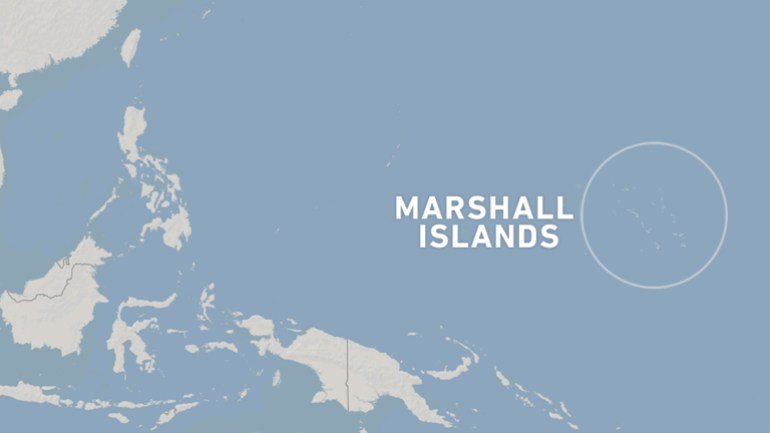
This makes the Marshall Islands one of the nations – along with fellow Small Island Developing States (SIDS) Kiribati, Tuvalu and the Maldives – most at risk of disappearing under the sea.
Litokne Kabua, a 20-year-old student from the island of Ebeye, has watched his world changing since he was a young boy, the seasons bending into unpredictable shapes, bringing drought, cyclones and tidal surges.
The Marshallese are still grappling with the fallout from a United States nuclear testing programme in the 1940s and 1950s, which left many inhabitants irradiated and ill from a range of cancers.
The future looks gloomy, but Kabua is currently studying economics and environmental studies at the University of Nebraska-Lincoln, campaigning for global leaders to drastically reduce emissions, daring to plan a future back in his homeland.
Back in 2019, he was one of a group of 16 youth activists who filed a landmark complaint with the United Nations Committee on the Rights of the Child, accusing major carbon-emitting countries of violating their rights.
We asked Kabua to describe the effects of climate change on the Marshall Islands. How has it affected his life and how does he see the future?
Al Jazeera: Tell us about life on the Marshall Islands
Litokne Kabua: We’re an island paradise, 10 percent land and 90 percent ocean. Our way of life is really laid-back, and everyone knows everyone else. If you were to do something stupid on the streets, your mother would find out the next second.
Family ties and community are really important. The Marshall Islands are a matrilineal society, so land rights are passed down from mothers to daughters and granddaughters. We have a saying, “Jined ilo kōbo”, which means that mothers are the weavers of society, not only in the house, but throughout the lands.
Al Jazeera: And nature? What role does nature play in your society?
Litokne Kabua: I feel blessed to be from this place, where we feel so connected to the three pillars of our society: the land, the skies and the ocean. We’re a seafaring people who developed our own ancient system of navigation, making charts out of twigs and seashells to move between the islands scattered across the deep blue ocean.
For so many centuries, our main source of food came from the sea, where we caught fish and lobsters. Today, lots of people make a living from catching tuna, selling it in the streets or at the market.
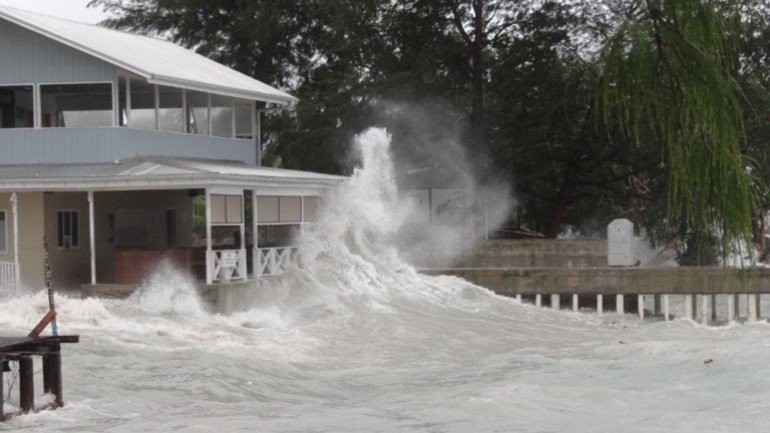
Al Jazeera: Is climate change threatening all of that?
Litokne Kabua: The changes in weather have been so strange. There’s a season of rain [April-December] and a season of sun [December-April]. But now, the seasons are happening later, or not at all. So, in the rainy months, we experience hot weather and drought.
The heat can be unbearable, really hard to handle. I remember when I was growing up on Ebeye, I would always be out all day, playing in the sun. But nowadays, I see my nieces and nephews staying inside because of the hot sun.
The sea is eating up the islands. It started getting bad around a decade ago, when the ‘king tides’ flooded the capital, Majuro. It caused a lot of devastation, damaging homes and causing a mass evacuation. That’s when I started to realise everything was changing.
Al Jazeera: It sounds terrifying …
Litokne Kabua: It was shocking and sparked a lot of fear among people as there was nowhere to escape to. As the tides get higher, it’s happening more and more frequently. And every time, it gets a little bit more severe.
On Ebeye, we used to have a little bit of sandy beach in front of our house, where we would hang out and play, but now it’s gone. We’ve had to bring rocks and bricks to our front yard to build protection from the rising seas.
We’ve always relied on our coral reef for protection against the waves, but thermal stress in our ocean contributes to bleaching, meaning it cannot grow properly. This has also affected people’s livelihoods, as the ecosystem has been affected and fishes are now leaving.
Al Jazeera: How are people reacting?
Litokne Kabua: Community leaders are trying their best to protect the community, but they are struggling. We have more storms now, destroying people’s houses. You see tin roofs flying off in the wind, which is scary. But we’re so limited in resources and so isolated in the middle of the ocean. Bringing in materials to rebuild homes takes time.
Older folks like my grandpa who grew up gathering food like fish, breadfruit and pandanus fruit to feed their families worry that our food sources are affected and that life here will become impossible.
Al Jazeera: Are they thinking about leaving?
Litokne Kabua: It’s a very emotional question. I would say most people I know would choose to stay behind in their homeland because it’s their identity. Even if the worst were to happen, I would also like to stay. We cannot leave our home.
In a way, the climate crisis and the nuclear legacy left by the US military are connected. After the US carried out its nuclear testing here [in the 40s and 50s], it stored the radioactive waste in a large concrete dome on Runit Island. But now the dome is cracking with the rising seas, and experts say it is leaking waste into the ocean.
If that happens, the entire foundation of life for the Marshallese people will be destroyed.
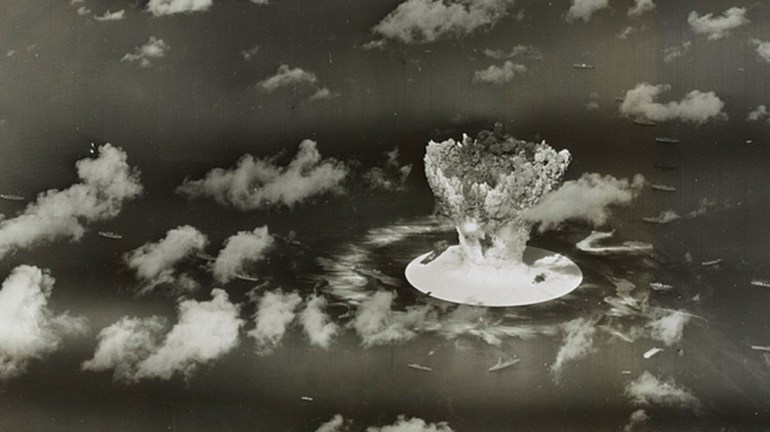
Al Jazeera: How did you get involved in climate action?
Litokne Kabua: I started working with local schools, raising awareness among young people about climate change and organising island and ocean clean-ups. I told them they needed to stand up for climate action and spread the word in their communities. I was also part of a youth climate group, gathering ideas to share with our leaders.
My ambition is to get involved in protecting the environment. There are so many things we need to do at a local level in our small bubble, but we also need to raise awareness at an international level.
Al Jazeera: Tell us more about your international work
Litokne Kabua: The Marshallese have a saying, “Wa kuk wa jimor”, simply meaning we are all in the same canoe. Us SIDS are dealing with the same climate threats. Joining forces means our voices can be heard in all corners of the world.
A few years ago, this organisation called H2OO [Heirs to Our Ocean], which has youth members from around the world, reached out to us on the Marshall Islands. This led to me attending the UN Youth Climate Summit in New York [in 2019], where I joined other young people in filing a complaint with the UN.
I wanted to grab the opportunity, not only to represent young people, but to represent our small country. I wanted people to know about the Marshall Islands.
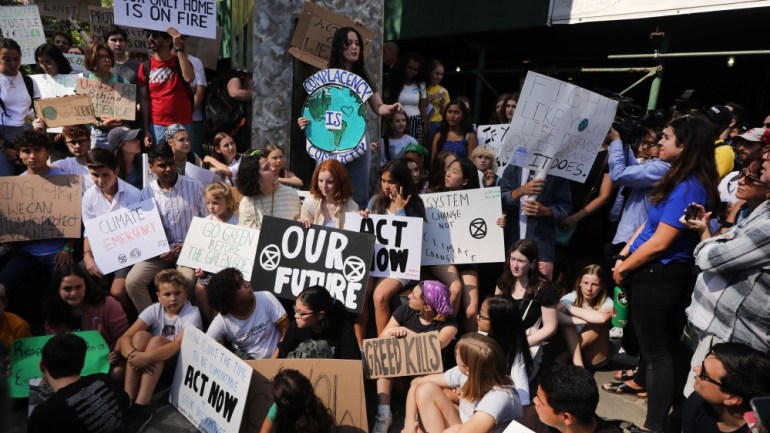
Al Jazeera: Do you think the world is listening?
Litokne Kabua: I would say it’s 50-50. Those who are listening to us are trying the best they can to raise awareness. But, on the other hand, leaders in governments and the corporate world, those who have the power and the money, aren’t really thinking about the future of our world. They could be helping, trying to safeguard small countries like the Marshall Islands. Maybe they think they’re not the ones who caused it. But I feel like the climate crisis is caused by everyone.
The voices of our small island communities are not listened to enough. Maybe big countries or world leaders think we are too small to listen to? Yet, it is us who are on the front line of climate change. It’s very unfair.
Al Jazeera: What are your hopes for the future?
Litokne Kabua: At COP28, I just hope we find common ground. People need to understand that countries like the Marshall Islands are now in a major emergency.
Climate change is not going anywhere. Its effects are increasing every day. If we take action now, it could still be reduced to a manageable level, allowing us to live and prosper.
But time is really running out.
This interview has been edited for length and clarity.